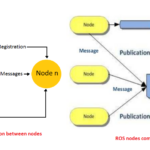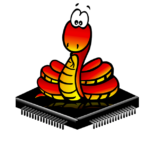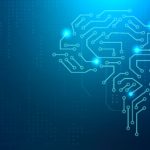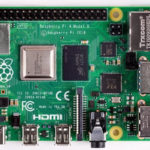Artificial intelligence (AI) and machine learning (ML) are continuing to become more mainstream and you’ll find the technology in everything from your smartphone apps and computer programs to smart tech and appliances — and automobiles (think self-driving cars). These technologies are no longer confined to scientific computing and statistical research but have, for the most part, become a part of everyday life.
AI aims to make computers self-aware and self-reliant by simulating human intelligence. ML is a subset of artificial intelligence that allows computers to learn and improve based on experience. It determines its program based on its experience of past inputs and outcomes and is currently the most widely used application of AI.
What’s, in part, allowed machine learning to develop so rapidly are initiatives such as uTensor and TensorFlow. uTensor is a free, open-source, and embedded ML infrastructure designed for rapid prototyping. TensorFlow Lite is Google’s ML framework that allows the deployment of machine-learning models on multiple devices.
It’s, perhaps, no surprise that computer engineers, developers, and programmers are in high demand and represent a couple of the fastest-growing occupations — with particular emphasis on AI and ML expertise.
The first step to becoming an expert in computer programming is to first learn and chose the ideal programming language. What makes this challenging is there is no one language. ML and deep learning models can be implemented in many programming languages. And each one has its own set of tools, libraries, and packages that implement various ML models.
Much like ML is a subset of AI, deep learning is a subfield of machine learning that relates to algorithms and “teaching” by example. For example, deep learning is a key technology behind driverless cars, enabling them to recognize a stop sign or a pedestrian.
The choice of the programming language selected for such projects largely depends on its purpose and the industry. For instance, in the development of web applications, JavaScript is the highest used programming language due to MEAN and MERN stacks. Therefore, if a developer is implementing an ML model for a web application, JavaScript is the obvious choice.
Similarly, if ML is required for a desktop game, C++ becomes the top choice. However, it should be noted that no programming language is confined to any one industry or software solution. There are certainly web applications developed in Python, Java, PHP, and .NET. But a developer will likely use Java for implementing ML models if the solution he/she is working on is in Java (Java is different from JavaScript, as you’ll learn below).
For beginners, Python has become the most popular programming language for machine and deep learning. Python is easy, versatile, and has a large number of libraries and frameworks that allow for the implementation of machine and deep learning. In fact, the simplicity with which these applications can be developed in Python has made it the third most preferred coding language in the world.
The language used will depend on the programmer, the project, and the industry. Let’s review the different programming languages used with machine learning models, including the pros and cons of each, and explore their tools and frameworks.
Python
Python began as a high-level programming language with a simple syntax. It’s widely used for web development, data analysis, scripting, machine learning, and desktop development — and for good reason.
Currently, no other programming language is as precise or easy-to-use, providing high code readability, which means its users don’t have to be a computer engineer or program developer. Python is considered to have a zero learning curve and a developer can start off using its ML-specific tools and frameworks without training.
The readability of the code is appreciated as the mathematics and statistics behind ML algorithms can be often convoluted.
This feature also means that a large team of developers can focus on the development of the program without getting entangled in language-specific intricacies. Python is highly flexible and efficient.
Part of its efficiency relates to the many libraries, tools, and frameworks available that are mature enough to handle the diversity or challenges of any AI problem. A developer would rarely need to write a library or module from scratch for implementing an ML model in Python. It already has the tools for nearly every machine-learning task.
These features make Python sound like a go-to choice for every project, but that depends on the project. Python is ill-suited for low-level programming. For example, it’s not possible to write hardware-level applications using it. And despite a simple syntax, Python is not ideal for most front-end development. Even in the web domain, Python is not considered suitable for single-page applications.
Rather, Python is the best choice when implemented in the backend, or when ML is implemented in embedded computers, such as on single-board microcomputers and AI development boards.
Some of the notable tools, libraries, and frameworks of Python used in ML include:
– NumPy: NumPy or Numeric Python is a library used for linear algebra, Fourier transform, computation of matrices, and multi-dimensional arrays. Essentially, ML involves manipulating datasets. NumPy is good at managing memory usage for arrays and matrices.
– Pandas: a library for data analysis, wrangling, and data visualization. It can handle large datasets including real-time streams.
– Matplotlib: a library used for data visualization. It’s useful for creating charts, graphs, histograms, and other graphical data representations.
– Seaborn: a library for data visualization. It’s built over Matplotlib and provides several built-in plots that are useful for a graphical representation of complicated data sets.
– SciPy: a library built on the top of the Numeric Python and useful in higher-level visualization and the manipulation of graphical data.
– Sci-Kit Learn: a tool used for ML modeling. It has several features for the implementation of an ML model via data mining and analysis.
– Keras: a tool used for creating deep learning models. It supports multiple backend neural computation engines and is widely used for distributed training of deep-learning models.
– TensorFlow: an open-source library used for creating large-scale deep-learning models.
– PyTorch: It is an optimized tensor library used for deep learning using GPUs and CPUs.
– OpenCV: an open-source library used for image processing and computer vision.
– Sci-Kit Image: an open-source library used for various image processing tasks.
– NLTK: a library used for natural language processing in Python.
– Librosa: a library for audio and music analysis.
- For the preparation of datasets and data wrangling, NumPy and Pandas are used.
- For data visualization, Matplotlib, Seaborn, and SciKit Learn are used.
- For ML modeling, Sci-Kit Learn is used.
- For text analytics, NLTK, NumPy, and Sci-Kit Learn are used.
- For image segmentation and other image-related ML tasks, Sci-Kit Image and OpenCV are used.
- For audio analysis and associated ML tasks, Librosa is used.
- For deep learning, TensorFlow, Keras, and PyTorch are used.
- For scientific computing, Sci-Py is used.
Python is mostly preferred for web mining, image segmentation, natural language, processing, and development of chatbots.
Java
Java is a high-level programming language and platform that was released in the mid-90s and is considered the jack-of-all-trades. It has been widely applied for smaller applications and large enterprise developments. Several enterprises have their infrastructure, codebase, and applications written in Java.
One benefit is that codes written in Java can be ported to any platform. It also has several libraries for handling datasets, data wrangling, exporting and importing, data visualization, and analysis.
There are a number of frameworks for big data analysis that are written in Java, including Hadoop, Spark, Hive, and Fink. It tends to be the preferred choice for ML when the existing codebase is already written in Java or big data analysis is involved. Developers typically prefer Java for implementing ML algorithms instead of migrating other languages, such as Python or R.
A few of the notable tools, libraries, and frameworks of Java used in ML include:
– Weka: a collection of ML algorithms used for data analysis, data mining, and predictive analysis. It can be easily used for general-purpose ML tasks with graphical interfaces.
– JavaML: a collection of ML algorithms for general-purpose machine-learning tasks.
– Apache Mahout: a scalable ML library that’s useful for data mining in distributed architectures.
– Apache Spark: a java platform for big data analysis on the top of Hadoop.
– DeepLearning4j: a Java library useful for deep learning in a single machine and distributed architectures.
– MALLET: useful for natural language processing in Java.
– Massive Online Analysis: an open-source software for data mining of real-time streams.
– ELKI: a Java framework mainly used for unsupervised learning. Machine learning in Java is commonly used for customer support services, cyber security, and fraud detection.
R
R is a programming language for high-level statistical computing, particularly large numerical datasets, and graphics. It focuses on the mathematical computations behind machine-learning and statistical algorithms and is supported by the R Core Team and the R Foundation for Statistical Computing.
R is considered superior to Python in terms of data visualization and analysis. It is also open-source, free to download, and offers more than 12K packages/libraries in the CRAN repository. This makes it a cost-effective alternative to similar solutions, such as MATLAB or SAS.
It is cross-platform and offers a wide range of packages for almost every imaginable ML task. It’s also flexible for use with other tools and frameworks.
However, R is not an easy language to start with for machine learning. Most of the R packages are third-party contributions and lack thorough documentation, so users require experience as it can be challenging to learn, write, and maintain a production code.
RStudio, which uses the R language to develop statistical programs, provides a complete integrated development environment for data visualization and the development of ML apps.
A few of the notable tools, libraries, and frameworks of Java used in ML include:
– Tidyr: used for data wrangling, cleaning, and organizing data.
– Ggplot2: used for data visualization.
– Dplyr: used for manipulating data, exporting, and importing data to external databases and data wrangling.
– Tidyquant: used for business and financial analysis.
– MICE: used for dealing with missing data values.
– PARTY: it is used for creating data partitions.
– rpart: a tool for creating data partitions.
– Rmarkdown: used for reporting insights from machine learning models.
– CARET: used for supervised machine learning like classification and regression.
R is mainly used for statistics-heavy applications like bioengineering, biomedical statistics, financial analysis, fraud detection, and sentiment analysis.
C++
C++ is a cross-platform language used to create high-performance applications and was created as an extension to the C language. C++ gives programmers a high level of control over system resources and memory but is not the easiest language to use for ML.
Compared to Python, however, C++ has benefits. It can be used to write hardware-level programs, allowing the developer can exercise strict control over memory use and CPU.
C++ is preferred where the execution speed of the ML algorithm is extremely significant, such as for the development of ML models for the Internet-of-things.
Some of the notable tools and frameworks of C++ used in ML include:
– mlpack: used for general-purpose ML. It’s highly scalable and easy to use.
– Shogun: a collection of tools used for data visualization, classification, and many other machine learning tasks.
– TensorFlow: used for deep learning using multi-layered neural networks.
– caffe: a deep-learning framework offering great execution speed and scalability.
– Torch: a deep-learning framework particularly useful in scientific computing and numerical analysis.
– Microsoft Cognitive Toolkit: a deep-learning framework in C++ for creating ANN.
– DyNet: a deep-learning framework for natural language processing, unsupervised learning, and reinforcement learning.
C++ is mainly used for implementing ML in game development, cyber security, embedded systems, and robotics.
JavaScript
Where Java is a multi-platform, object-oriented programming language, JavaScript is a cross-platform scripting language designed to help develop interactive web pages. It follows the rules of client-side programming, running in a user’s web browser but without the need for any resources from the web server. JavaScript is commonly used for full-stack development within MEAN (MongoDB Express Angular Node.JS) and MERN (MongoDB Express React Node.JS) technology stacks.
JavaScript can be used for ML development in the front-end (within the browser) and in the back-end (within the Node.JS). Machine learning in JavaScript is mainly attracting
Developers that use JavaScript must implement machine learning at front-end, running over pure HTML instead of using back-end servers.
A few of the notable tools, libraries, and frameworks of JavaScript used in ML include:
– Tensorflow.js: a popular ML library in JavaScript. It can be used to create almost any ML model using web APIs.
– Math.js: a library useful for working on numbers and mathematical analysis.
– machinelearn.js: equivalent to Sci-Kit Learn of Python. It is useful for supervised and unsupervised learning in JavaScript.
– Brain.js: used for GPU accelerated deep learning at the Node.JS backend.
– OpenCV.js: a library useful for image processing in JavaScript.
– face-api.js: an API for face detection and recognition. It can be easily integrated at the front-end and Node.JS.
JavaScript-based ML is mainly used in online games, network monitoring, content recommendation engines, image classification, and object detection.
Scala
Scala is a statically typed programming language. It runs on the Java platform (Java virtual machine) and is compatible with Java libraries and programs. Essentially, it was designed by simplifying Java for machine learning.
As a complied language (meaning its translators generate machine code from source code), it is faster than Python for code executions. Scala is ideally suited for ML on large databases where big data analysis is involved, such as with Apache Spark.
As it uses both functional and object-orient programming, it’s quite difficult to learn. It is often picked by Java developers looking for big data analysis over distributed frameworks.
Some of the notable tools and frameworks of Scala used in ML are:
– Saddle: useful for data analysis and general-purpose machine learning.
– Breeze: a Scala library for scientific computing.
– Aerosol: useful in implementing GPU-accelerated and CPU-accelerated ML.
– Scalalab: useful for Matlab-like functionalities.
– NLP: used for natural language processing in Java.
Scala is mainly used for working on big data. It is useful in parallel computing and DSL (Domain Specific Language) computing.
Julia
Julia is a general-purpose, dynamic programming language typically used for deep learning that’s well suited for numerical analysis and computational science.
Its syntax is similar to a scripting language much like Python and R. It also offers excellent execution speed and parallel computing that’s similar to Java and Matlab.
Julia is mainly preferred for back-end deep learning and used along with Python for front-end deep learning. Though it can also be easily used with C and Python tools and libraries.
Some of the notable tools and frameworks of Julia used in ML are:
MLBase.jl: a Julia package used for general-purpose machine learning tasks like data manipulation, test and validation, model tuning, and model performance evaluation.
– Flux: a lightweight package covering functionalities similar to TensorFlow.
– TensorFlow.jl: a TensorFlow-like package written in Julia.
– SciKitLearn.jl: a package covering functionalities similar to Sci-Kit Learn. It is mainly used for supervised learning.
– Knet: a GPU-accelerated deep learning framework in Julia.
Julia is mainly used in scientific computing and parallel programming.
Final thoughts
Machine learning models and deep learning networks can be implemented in several coding languages. Developers and programmers make their choice based on the infrastructure, existing codebase, and their own expertise in a particular coding language.
For beginners, Python is the easiest language to start exploring the field of AI and ML. For those aspiring to use machine or deep learning in embedded systems and the Internet of things, Python is once again an ideal choice.
For those with an interest in high-performance ML within robotic locomotion and embedded systems, C++ might be the preferred choice. Ultimately, it’s up to the programmer.
You may also like:
Filed Under: Featured, Tech Articles









Questions related to this article?
👉Ask and discuss on Electro-Tech-Online.com and EDAboard.com forums.
Tell Us What You Think!!
You must be logged in to post a comment.